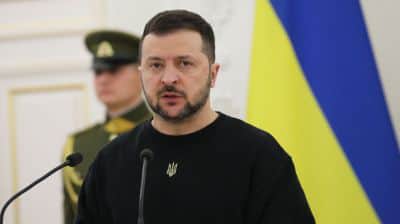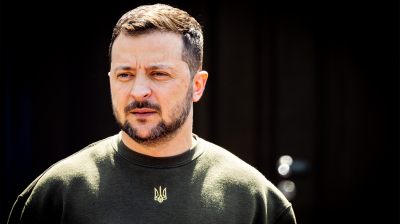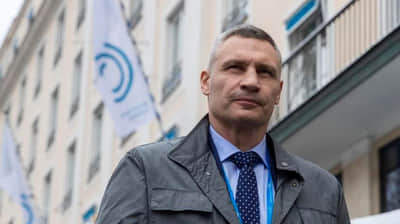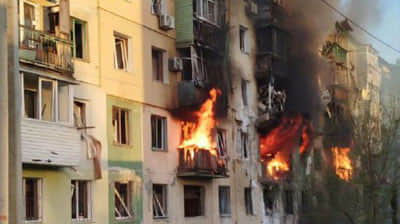General Staff: Russian troops in Transnistria on full alert
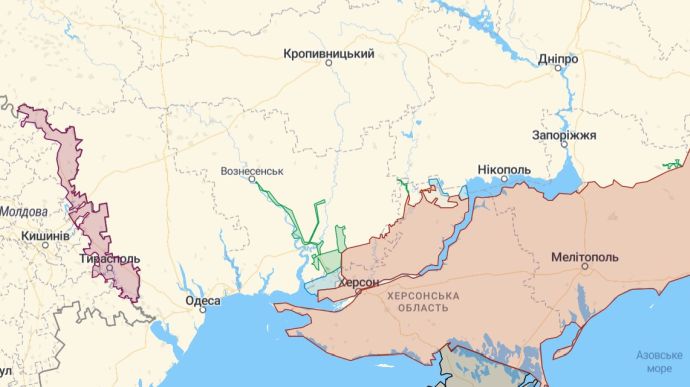
Kateryna Tyshchenko – Tuesday, 26 April 2022, 19:02
Units of Russian troops have been put on full alert in the unrecognised Transnistria (or the Pridnestrovian Moldavian Republic) in Moldova.
Source: General Staff of the Armed Forces of Ukraine, on Facebook – information as of 18:00 on 26 April
According to the General Staff: "Units of an operational group of Russian troops have been put on full alert and Russian security forces have been shifted to an elevated level of service in the territory of the Transnistrian region of the Republic of Moldova."
Details: On the Slobozhanskyi front, groups of Russian troops from the 6th All-Military Army of the Western Military District and the coastal troops of the Baltic and Northern Fleets continue to partially blockade Kharkiv and shell the city.
On the Izium front, Russian units and subdivisions of the 1st Tank Army, the 20th and 35th All-Military Armies, the 68th Army Corps and the Airborne Forces, supported by artillery, are advancing toward Barvinkove. Russian soldiers are deploying UAVs in order to map out the positions of Ukrainian troops.
Russian field camps in the portion of the Belgorod Region of the Russian Federation which borders Ukraine continue to be used to restore combat readiness and to train units of Russian troops. According to available information, up to 5 Russian battalion tactical groups are in the immediate vicinity of the state border of Ukraine in this area.
On the Donetsk front, Russian troops conduct active hostilities along almost the entire line of contact with Ukrainian troops. Their main efforts are focused on capturing Rubizhne, Popasna, and Mariinka.
Russian troops are regrouping on the Sievierodonetsk front: a tank battalion from the 90th Tank Division and a pontoon-bridge unit from the 12th Separate Engineering Brigade of the Central Military District were moved nearer to Kreminna.
Russian troops are gathering forces to continue the offensive on the village of Lyman.
They continue to deploy artillery to shell Mariupol and carry out air strikes on the city. The siege of the Azovstal plant continues.
On the Pivdennyi, Bug, and Tavriia fronts, Russian troops continue to hold the occupied territories. They are trying to improve their tactical positions in some areas but are unsuccessful. They continue to fit out their positions and to shell the positions of Ukrainian troops.
On the Volyn, Polissya, and Siverskyi fronts, certain units of the Belarusian Armed Forces are performing tasks to strengthen the protection of the Ukrainian-Belarusian border.
The General Staff reports that overall Russian troops are conducting an offensive operation in the Eastern Operational Zone. Their main goal remains the encirclement and defeat of the Ukrainian Joint Forces, the establishment of full control over the territory of Donetsk and Luhansk Regions, and the creation of a land corridor to the occupied Crimea.
Russian troops continue to launch missile and bomb strikes on military and civilian infrastructure.
Background:
- On the afternoon of 25 April, there were explosions in the building of the "Ministry of State Security" of the self-proclaimed Transnistria in Tiraspol. The following day, a TV tower was blown up. On 26 April, the press service of the self-proclaimed "President" of Transnistria, Vadim Krasnoselskiy said there was a third attack.
- The Moldovan Reintegration Bureau said that the explosions at the "Ministry of State Security" in Tiraspol created tensions in the Transnistrian region.
- Ukrainian intelligence said that the leaders of the Pridnestrovian Moldavian Republic (PMR) and the Federal Security Service of the Russian Federation were preparing for the explosions 3 days before the incident occurred and were planning to continue the attacks. Their goal is to involve Transnistria in hostilities in Ukraine, either to mobilise soldiers or to enable Russia to carry out attacks from its territory.
- After explosions in unrecognised Transnistria, queues formed of cars trying to leave Transnistria for the Moldovan government-controlled territory.
- After a series of explosions in the unrecognised PMR, a "red level of terrorist threat" was introduced.
